Pilonidal Cyst Treatmentin New Jersey
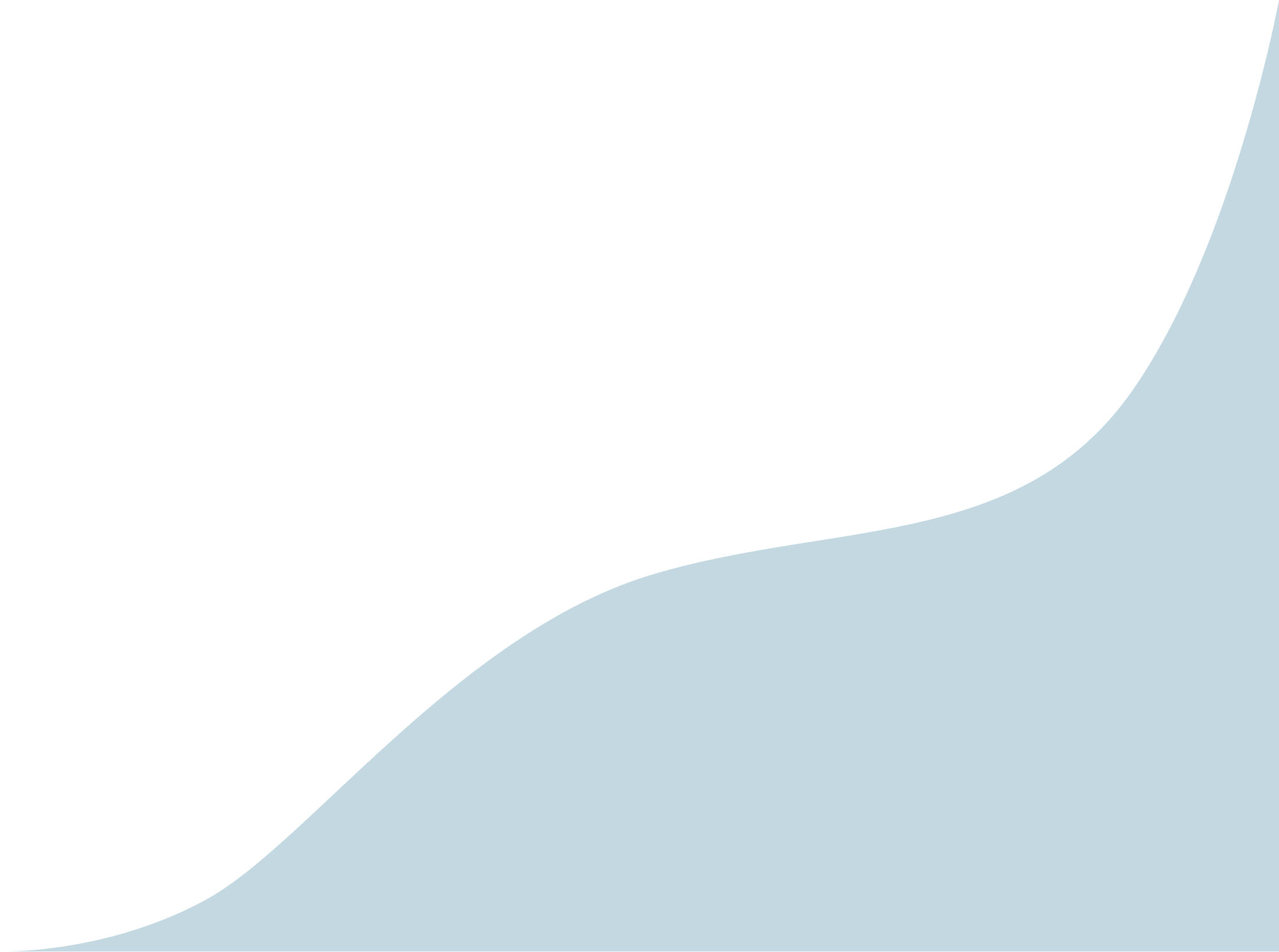

Pilonidal disease can cause extreme discomfort and can be a notoriously difficult condition to resolve. It can cause pain while sitting, lying down, or when coming in contact with clothing. If left untreated, pilonidal disease can lead to further complications, such as infection or abcess.
Fortunately, Dr. Shomaf Nakhjo offers a curative solution to pilonidal disease, offering lasting relief and preventing the condition from recurring. Take the first step towards a permanent Pilonidal Cyst Treatment in New Jersey with a consultation with Dr. Shomaf Nakhjo - Advanced Minimally Invasive Surgery.
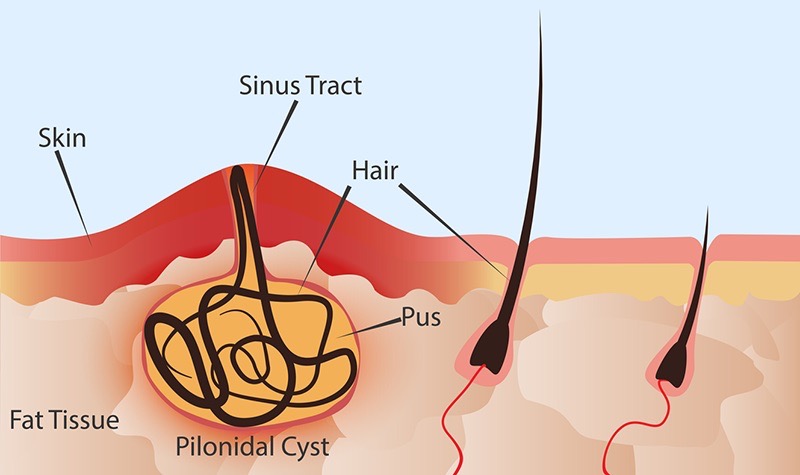
Pilonidal disease (often referred to as a Pilonidal cyst) is a chronic skin and subcutaneous fat infection in the crease of the buttocks typically occurring in teens and young adults. The condition is often the result of hairs that invade the skin in the cleft (crease) and become infected.
Most patients with a Pilonidal Cyst experience large, painful areas that are tender to the touch with openings that have clear, cloudy or bloody discharge. Redness and tenderness with foul smelling pus (discharge), along with possible fever, are indications of an abscess formation.
While pilonidal disease is relatively common, many don’t realize that there is an incredibly high recurrence rate if not treated properly.
Although the symptoms of Pilonidal Cyst Disease can differ from person to person, they generally involve:
Other physical signs that may indicate the presence of the condition include:
The first course of action for patients is typically a round of antibiotics along with draining of the abscess, however, most cases will ultimately need surgery for definitive management.
Unfortunately, a routine pilonidal cystectomy (midline wound/open) that most surgeons perform has a very high recurrence rate. The cleft lift procedure (Bascom Lift) is another option.
Dr. Nakhjo is one of a few surgeons in the country who performs the cleft lift procedure. It is an outpatient surgical procedure that is intended to cure pilonidal disease. The procedure takes about an hour (performed under general anesthesia). Patients are typically home the same day, with minimal discomfort and can return to normal daily activity within 1-2 days and full activity without any restriction in 2 weeks.
Pit picking, SiLac (laser treatment), EPSiT (endoscopic excision), Gips, Simple Pilonidal Cystectomy, and Open Excision are all surgical alternatives that may be used to treat pilonidal disease. It is reasonable for some patients to explore and try some of these alternatives. Some are more invasive, and some are less invasive than the Cleft Lift procedure. However, remember that they can have up to a 60% recurrence rate, and recovery may be even more difficult than the Cleft Lift procedure.
We generally do not advise having any of these procedures and only reserve them for select patients with very limited or minimal pilonidal disease.
These procedures have such high recurrence rates because they do not address the underlying issue, a deep gluteal cleft (butt crease)—a deep gluteal cleft harbors and traps moisture and bacteria, which cause pilonidal disease. The Cleft Lift procedure eliminates this and is the reason why it has a 99% success rate.

At Advanced Minimally Invasive Surgery, we regard our patients as “family,” and we treat them accordingly. We take a “boutique” approach to our practice that provides patients with the highest level of personal attention. We pledge to be always available and always accommodating. This is why we strive to provide the best Pilonidal Cyst Treatment New Jersey has to offer!
The cleft lift procedure differs from other procedures in that it only removes scarred skin and minimal underlying tissue, putting the incision sufficiently to the side so it can heal well. Other flap procedures often result in disfiguring scars and fail to sufficiently re-contour the cleft to prevent recurrence.
Notice the wound is appropriately off of the midline of the body. The gluteal cleft or "butt crack" has a smoother "U" shape contour. This allows the skin to be in an open air environment which prevents collection of moisture and debris. These are two key features that allow for proper wound healing and minimize the risk of the problem coming back.
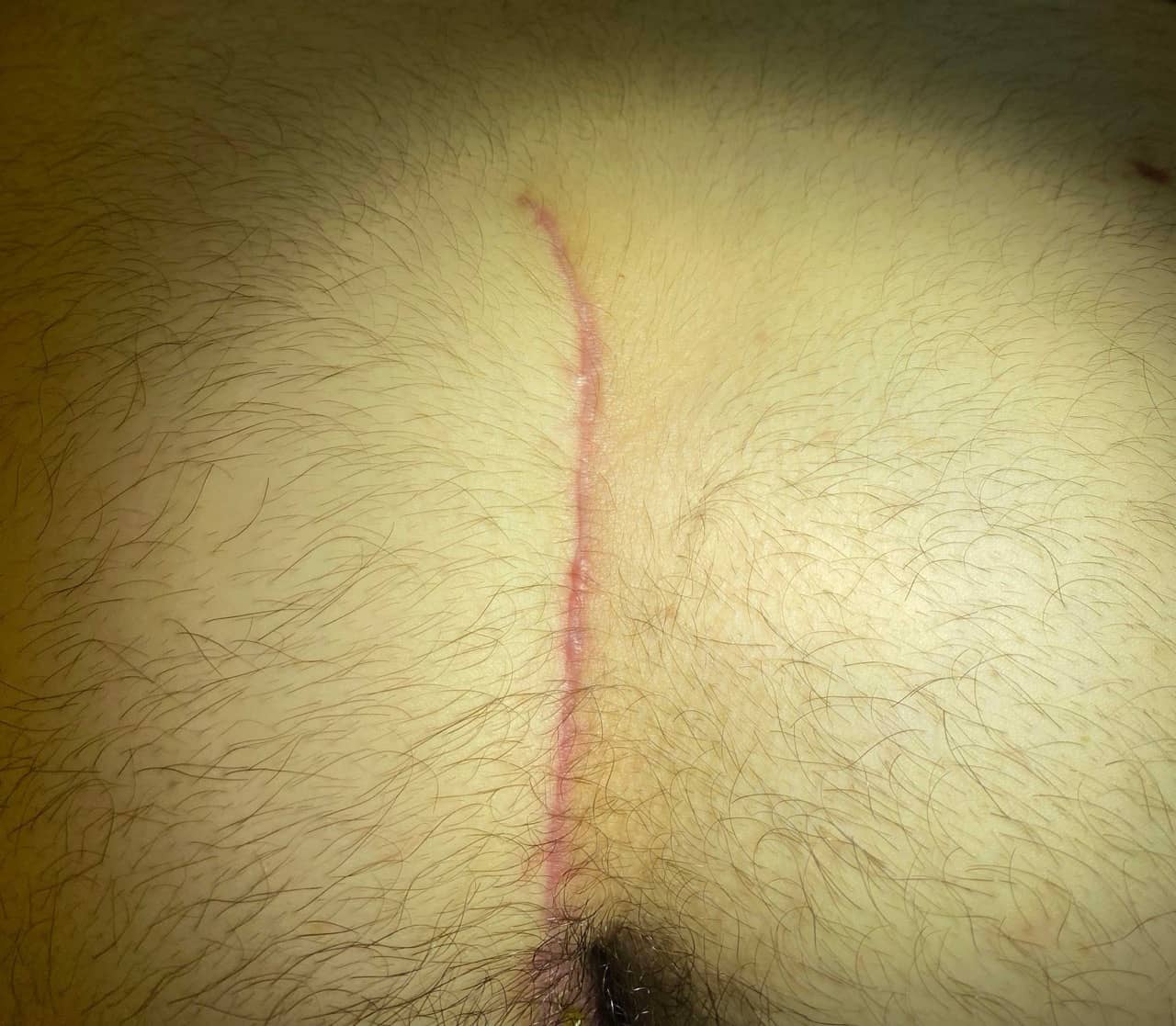
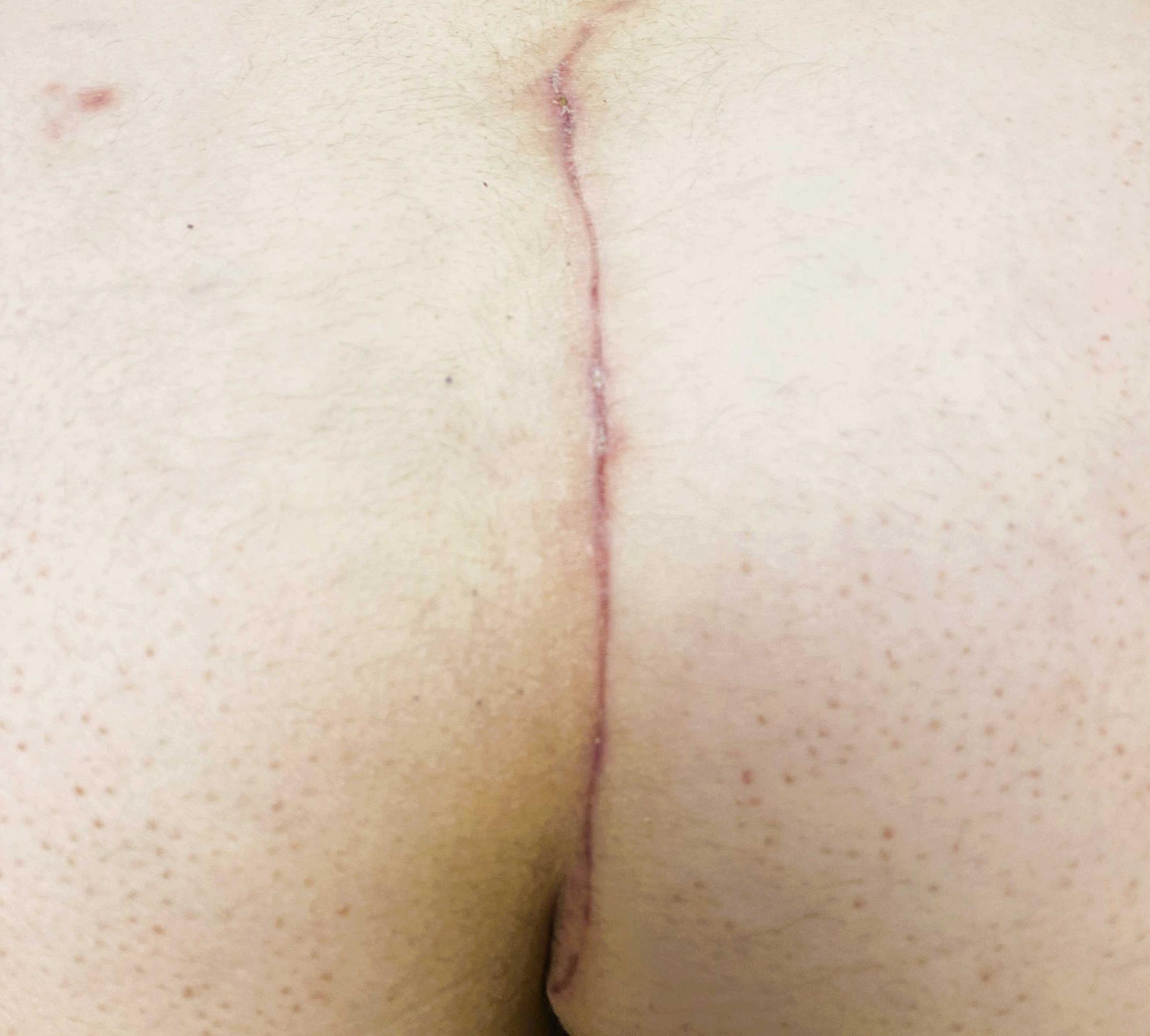
Most commonly, Pilonidal Cysts occur in young men, although women—especially pregnant women—can get them, too. People who sit for prolonged periods of time are at elevated risk for pilonidal disease. Research shows that other risk factors include:
Pilonidal disease is not a rare condition. More than 70,000 cases are reported in the U.S. each year. The average age for pilonidal patients is between 20 and 35.
As part of a full physical examination, your doctor will check the crease of your buttocks for signs of a Pilonidal Cyst, which should be visible to the naked eye. Your doctor may also ask you several questions, including:
In some cases, your doctor may order a CT or MRI to check for sinus cavities that may have formed under your skin.
Pilonidal disease is not a rare condition. More than 70,000 cases are reported in the U.S. each year. The average age for pilonidal patients is between 20 and 35.
We work with almost all insurances companies and plan types. We will make sure you get the surgery you need whether you have an HMO, EPO or PPO with NO up-front fees or “down payments”. You pay hefty premiums to your insurance company to get the healthcare you deserve. You should NOT have to pay additional upfront costs.
Suffering from pilonidal troubles is challenging enough, you do not need to have financial stress on top of that. If you ever have questions or concerns about your insurance coverage and our billing practices, please do not hesitate to call or email our office.
Dr. Shomaf Nakhjo, DO, is a board-certified and fellowship-trained physician who is a nationally-respected authority on minimally invasive surgical procedures. He has served Northern New Jersey for the last 15 years and has performed more than 4,000 procedures in his career. He has built a medical practice that is committed to providing the highest level of care using the most advanced and innovative technology and techniques available.
Dr. Nakhjo invites you to schedule your New Jersey Pilonidal Cyst Treatment consultation by either registering here at advancedsurgerynj.com or by calling (973) 383-2222.
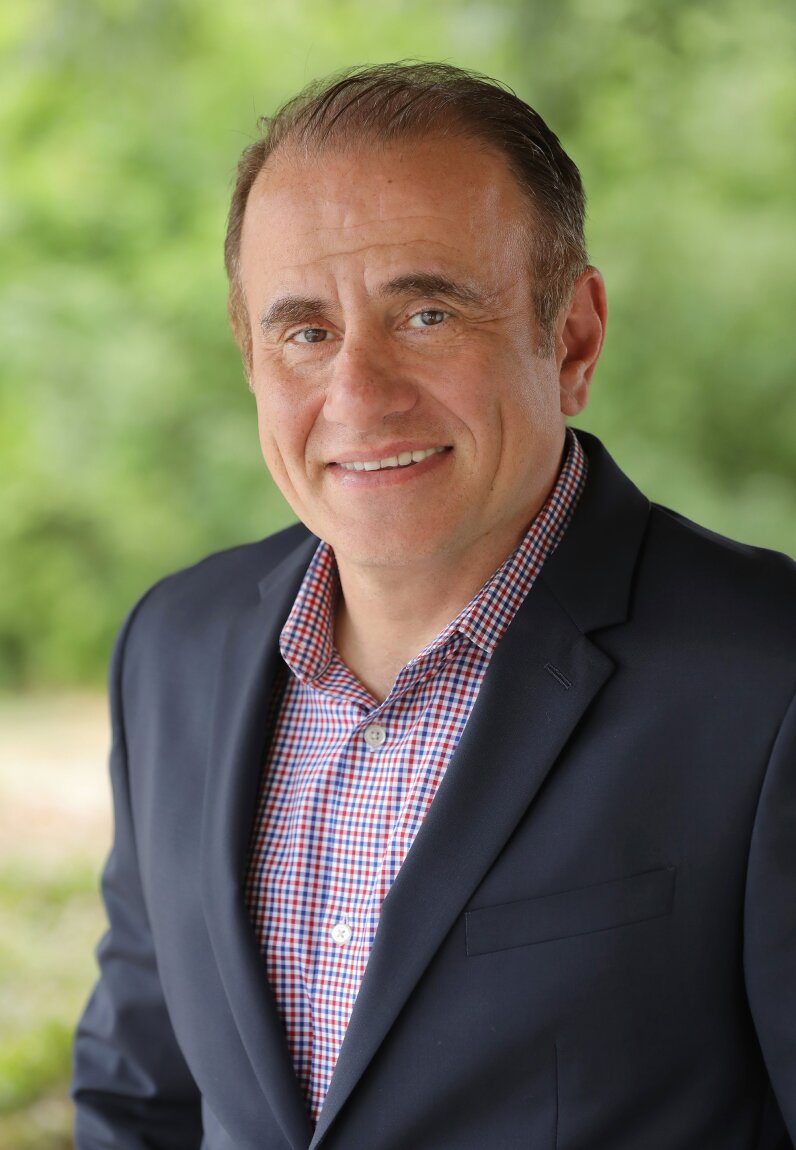
In some cases, yes. Your family history can play a role in whether you will develop pilonidal cysts, particularly if rough body hair is common in your family.
No, you can’t spread it. Most researchers now believe these cysts are caused by ingrown hairs.
Occasionally, yes, they can drain and disappear. If you have chronic pilonidal disease, your symptoms will tend to come and go over time.
The biggest danger would be the potential development of a life-threatening systemic infection. In some very rare cases, pilonidal cysts have been associated with development of the skin cancer known as squamous cell carcinoma, or SCC.
Not always, but you can reduce your chances of developing these cysts by:
Our "Ask the Dr. Anything" service is tailored to address any questions or uncertainties you may have regarding your pilonidal troubles. Whether you're seeking clarification on symptoms, treatment options, or our practice, we are here to provide you with comprehensive information and guidance.
Please feel free to email us at: advancedsurgerynj.com. Under Subject type “ADA'' and Dr. Nakhjo will be happy to answer your questions.
Let's navigate the complexities of your pilonidal troubles together, ensuring you have the support you need for a healthier tomorrow.
For the most advanced treatment, easiest recovery, and best possible results with minimally invasive surgery in New Jersey, begin your journey with Dr. Shomaf Nakhjo today. Schedule your consultation at either of our convenient locations to begin discussing your personalized treatment plan with a highly skilled and renowned area specialist.